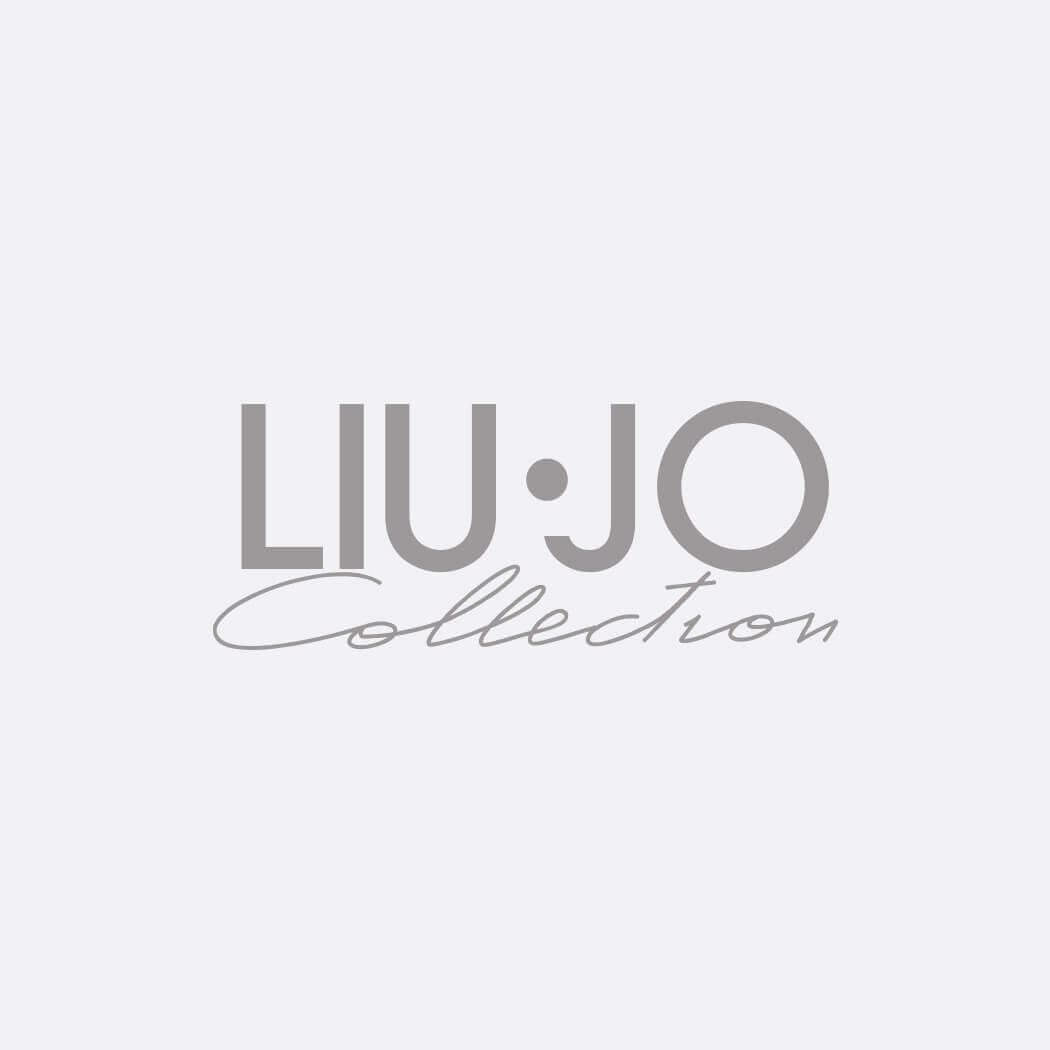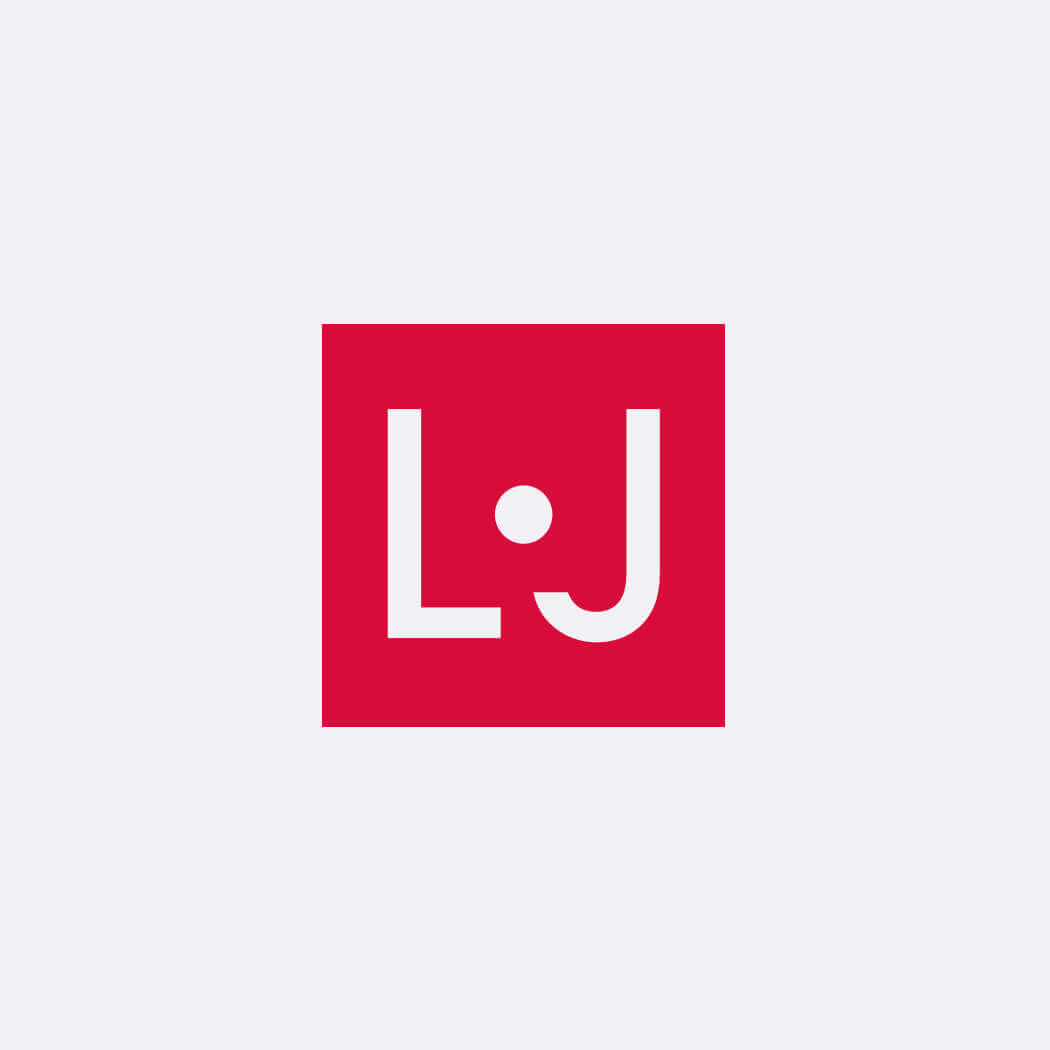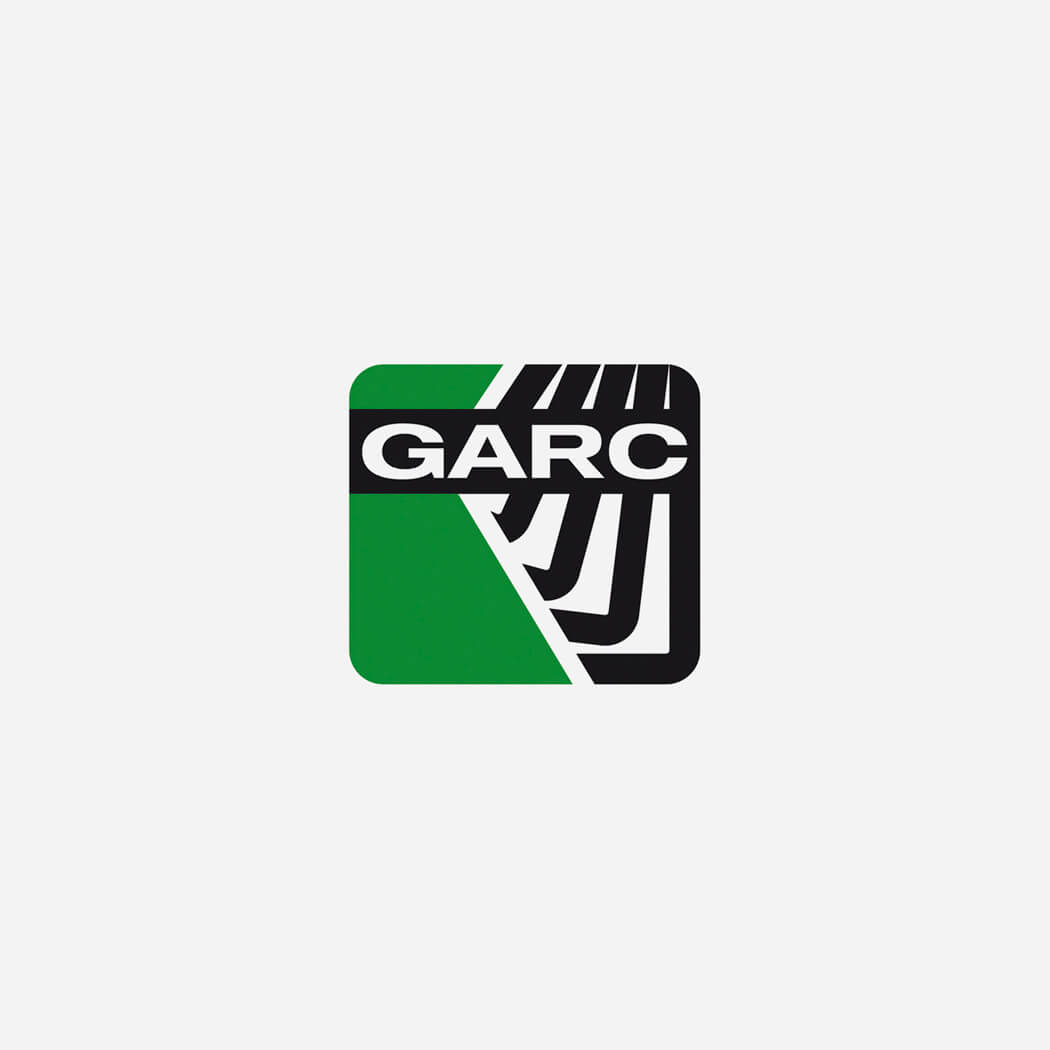For every new project or business initiative it’s necessary to think big, also as regards the brand, it’s necessary to think about possible future developments and protect yourself.
Thinking big when we first create and then register a brand is what EUIPO1 suggests.
It’s possible that today your company is actually offering more products and services than you believe and that you can confidently indicate the market in which it operates, what you do not know is how the business could develop in the future and what protections it will need your brand.
If today you produce candies and distribute them only in Italy, for example, in two or five years you might want to expand your offer of products – for example ice cream – and sell them all over Europe.
In some countries, those with legal system based on common law, “previous use” is generally sufficient to claim rights to a particular trademark in the event of a dispute, even if the trademark is not registered. In civil law countries, however, this is usually not the case. Only trademark registration guarantees legal certainty regarding exclusive rights to use the trademark, regardless of how many years a company has used the name. Even in the first case, it is advisable to register a trademark, since the registration will strengthen the position of the owner in case of dispute.
If you carry out a business, you certainly also have a brand to be identified by customers. The brand allows you to differentiate your products from those of others and encompasses your values. It can be the most precious resource available to you. The brand is part of your intellectual property and is crucial to the success of your business. Have you ever checked whether there are one or more brands in the market in which you operate that can confuse the consumer or that indirectly and fraudulently benefit from your ‘brand awareness’?
1 L’EUIPO is the European Union Intellectual Property Office responsible for managing European Union trade marks and registered Community designs.
Intellectual Property
Definition of intellectual property
The concept behind intellectual property (PI) is simple and has been present in our life for a long time. Wherever we go, we are surrounded by intellectual property. Simple thoughts and ideas do not yet represent intellectual property; the latter defines and protects human innovations and creations.
- Brands indicate the origin of products to consumers.
- The designs or models specify the appearance of the products.
- Copyright concerns artistic creations such as books, music, paintings, sculptures and films.
- Patents protect technical inventions in all fields of technology.

Intellectual property rewards innovators and allows everyone to benefit from their results. This map will help you register your rights.
The Brand
Definition of trademark
Trademarks are signs used in commerce to identify products.
The brand is the symbol that allows customers to recognize and distinguish your products and services from competitors.
The only condition for registering a trademark is that it must be clearly defined, otherwise no one – neither you nor your competitors – will have the certainty of what the registration covers.
Creation of a Brand
The brand must be distinctive
Consumers must be able to recognize your sign for what it is, for example an indication of origin. Your brand should distinguish you from other companies on the market so that you can protect and shape the identity and value of your brand.
The brand doesn’t have to describe what you sell
The brand should not monopolize a sign that merely describes the products and / or services you offer. Signs of this kind must remain available to everyone: yours and the competition.
The Types of Branding you can Protect
Depending on what you want to protect (a word, a figure, a color etc.) you can choose between different types of brands. See the types of brands to choose from. The signs that make up a brand must be suitable for distinguishing the products and services of one company from those of another company.
In order for the trademark to be registered, it must be distinctive and not describe what you sell.
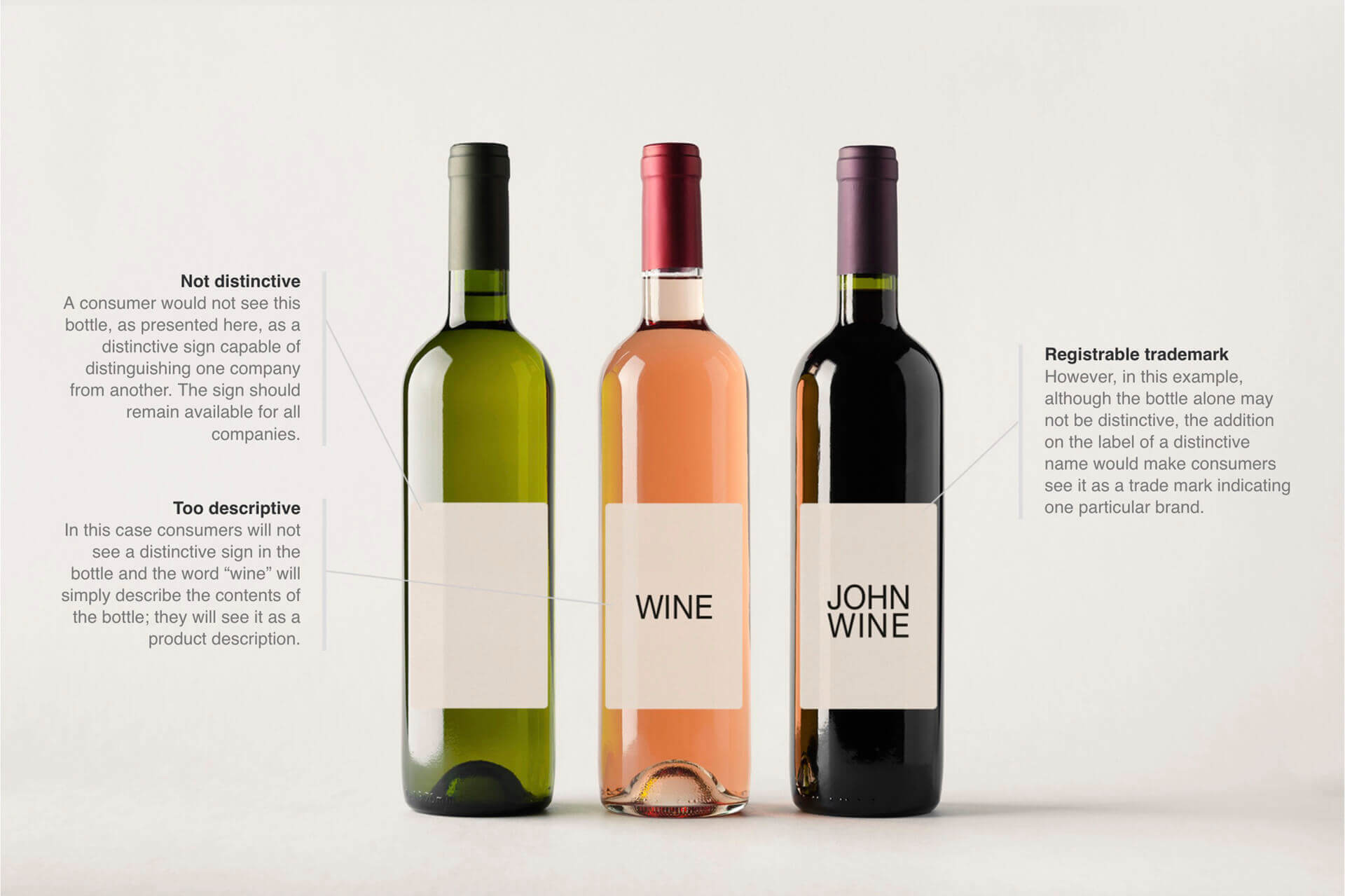


Not distinctive
A consumer would not see this bottle, as presented here, as a distinctive sign capable of distinguishing one company from another. The sign should remain available for all companies.
Too descriptive
In this case consumers will not see a distinctive sign in the bottle and the word “wine” will simply describe the contents of the bottle; they will see it as a product description.
Registrable trademark
However, in this example, although the bottle alone may not be distinctive, the addition on the label of a distinctive name would make consumers see it as a trade mark indicating one particular brand.
What can be an EU trade mark
An EU trade mark can consist of any signs, in particular words (including personal names), or designs, letters, numerals, colours, the shape of goods, or of the packaging of goods or sounds. On 1 October 2017, as a result of the Amending Regulation (EU) 2015/2424, what was termed the “graphical representation requirement” was removed.
In practice, this means that as long as your trade mark falls into one of the categories of trade marks accepted by the Office, and can be represented by the accepted formats, you can submit it as an application without having to represent it graphically.
Word Mark
A word mark consists exclusively of words or letters, numerals, other standard typographic characters or a combination thereof that can be typed.
Figurative Mark
It is a trade mark where non-standard characters, stylisation or layout, or a graphic feature or a colour are used, including marks that consist exclusively of figurative elements.
Figurative Mark containing word elements*
A figurative mark consisting of a combination of verbal and figurative elements.
Shape Mark
A shape mark consists of, or extends to, a three-dimensional shape. It can include containers, packaging, the product itself or its appearance.
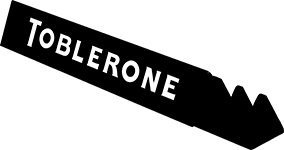
Shape mark containing word elements*
A shape mark that contains verbal elements.
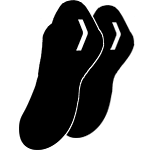
Position Mark
A position mark consists of the specific way in which the mark is placed or affixed to the product.

Pattern Mark
A pattern mark consists exclusively of a set of elements which are repeated regularly.

Colour (single) Mark
A colour single mark is just that – a trade mark which consists exclusively of a single colour (without contours).

Colour (combination) Mark
A trade mark which consists exclusively of a combination of colours (without contours)
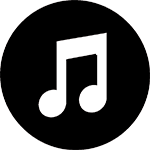
Sound Mark
A sound mark consists exclusively of a sound or a combination of sounds.

Motion Mark
A trade mark consisting of, or extends to, a movement or a change in the position of the elements of a mark.

Multimedia Mark
It consists, or extends to, the combination of images and sound.
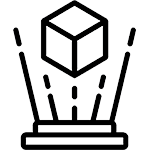
Hologram Mark
This is a new category of trade mark (as and from 1 October 2017). Hologram marks consist of elements with holographic characteristics.
*The trade mark types marked with an asterisk are not separate categories under the EU trade mark Implementing Regulation. They are however differentiated in the e-filing for practical and technical reasons.
The Types of Trademark you can Register
There are three kinds of trade marks you can register: individual marks, certification marks and collective marks.
An individual mark distinguishes the goods and services of one particular company from those of another.
However this does not mean that an individual trade mark has to be owned by a single person: individual trade marks can be owned by one or more legal or natural persons. This means that there are multiple applicants.
Collective marks distinguish the goods and services of a group of companies or members of an association from those of competitors.
Collective marks distinguish the goods and services of a group of companies or members of an association from those of competitors. Collective marks can be used to build consumer confidence in the products or services offered under the collective mark. Very often they are used to identify products which share a certain characteristic. Only associations of manufacturers, producers, suppliers of services or traders, as well as legal persons governed by public law, may apply for collective marks.
Certification marks were introduced at EUIPO on 1 October 2017.
They are a new type of trade mark at EU level, although they have already existed for many years in national systems. They are used to indicate that goods or services comply with the certification requirements of a certifying institution or organisation; they are a sign of supervised quality. Any natural or legal person, including institutions, authorities and bodies governed by public law, may apply for EU certification marks provided that such person does not carry on a business involving the supply of goods or services of the kind certified.
The Trademark Registration Process in 8 steps
Once filed with the European Union Intellectual Property Office (EUIPO), the trademark will be subject to official procedures to verify whether it can be registered. There are several stages:
Presentation of the Application
Receipt of the Application
Examination Period
Publication of the Application
Opposition Period
End of Opposition Period
Registration
Publication of the Registered Mark
What can be an EU trade mark
An EU trade mark can consist of any signs, in particular words (including personal names), or designs, letters, numerals, colours, the shape of goods, or of the packaging of goods or sounds. On 1 October 2017, as a result of the Amending Regulation (EU) 2015/2424, what was termed the “graphical representation requirement” was removed.
In practice, this means that as long as your trade mark falls into one of the categories of trade marks accepted by the Office, and can be represented by the accepted formats, you can submit it as an application without having to represent it graphically.
Word Mark
A word mark consists exclusively of words or letters, numerals, other standard typographic characters or a combination thereof that can be typed.
Figurative Mark
It is a trade mark where non-standard characters, stylisation or layout, or a graphic feature or a colour are used, including marks that consist exclusively of figurative elements.
Figurative Mark containing word elements*
A figurative mark consisting of a combination of verbal and figurative elements.
Shape Mark
A shape mark consists of, or extends to, a three-dimensional shape. It can include containers, packaging, the product itself or its appearance.

Shape mark containing word elements*
A shape mark that contains verbal elements.

Position Mark
A position mark consists of the specific way in which the mark is placed or affixed to the product.

Pattern Mark
A pattern mark consists exclusively of a set of elements which are repeated regularly.

Colour (single) Mark
A colour single mark is just that – a trade mark which consists exclusively of a single colour (without contours).

Colour (combination) Mark
A trade mark which consists exclusively of a combination of colours (without contours)

Sound Mark
A sound mark consists exclusively of a sound or a combination of sounds.

Motion Mark
A trade mark consisting of, or extends to, a movement or a change in the position of the elements of a mark.

Multimedia Mark
It consists, or extends to, the combination of images and sound.

Hologram Mark
This is a new category of trade mark (as and from 1 October 2017). Hologram marks consist of elements with holographic characteristics.
*The trade mark types marked with an asterisk are not separate categories under the EU trade mark Implementing Regulation. They are however differentiated in the e-filing for practical and technical reasons.
The Trademark Registration Process in 8 steps
Once filed at the European Union Intellectual Property Office (EUIPO), your trade mark will be processed by us to check that it can be registered. There are various steps.
Presentation of the Application
Receipt of the Application
Examination Period
Publication of the Application
Opposition Period
End of Opposition Period
Registration
Publication of the Registered Mark
Our Job
Below are just a few examples of brands for which we have make naming, design, restyling, or even just priority and similarity searches for a subsequent filing.
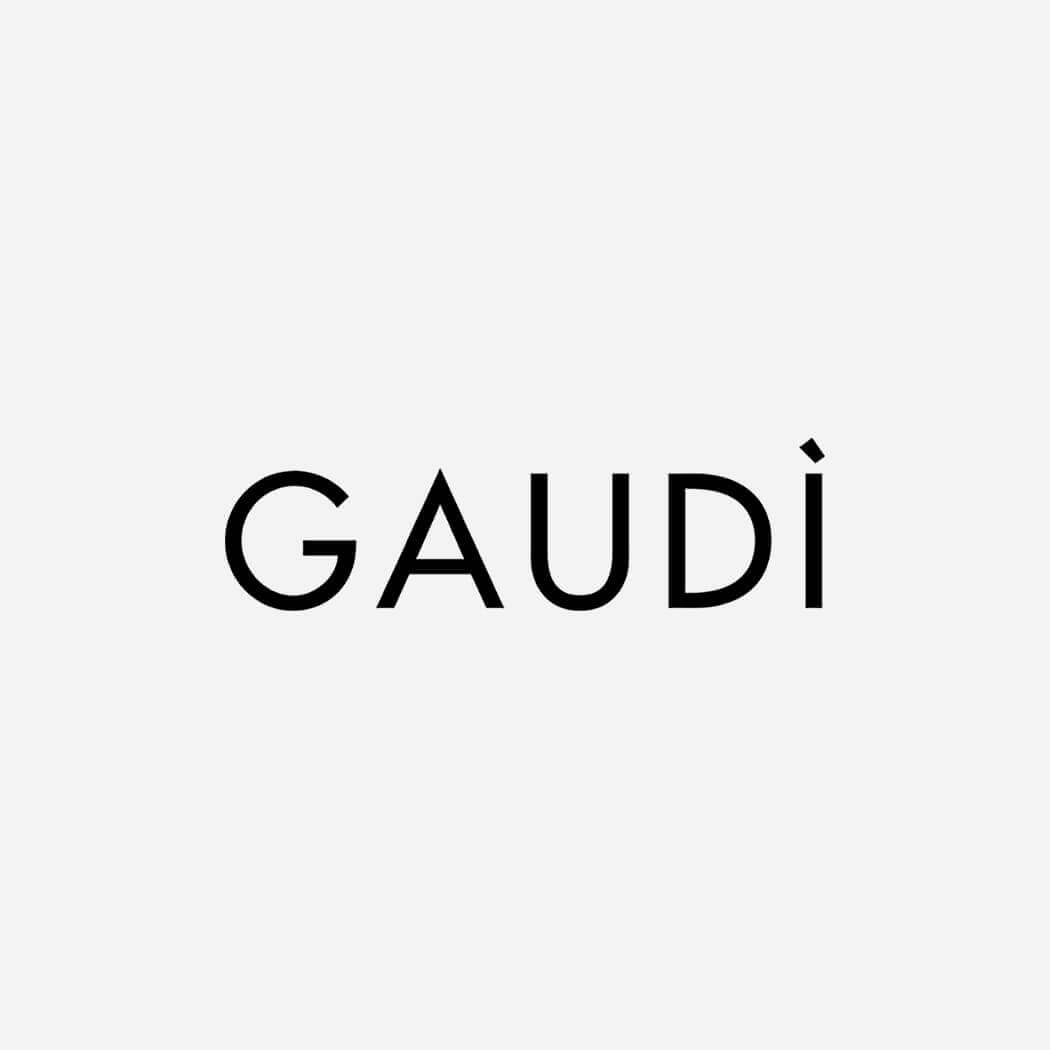
1993
National filing of the Gaudi Uomo brand in 1 class of products/services
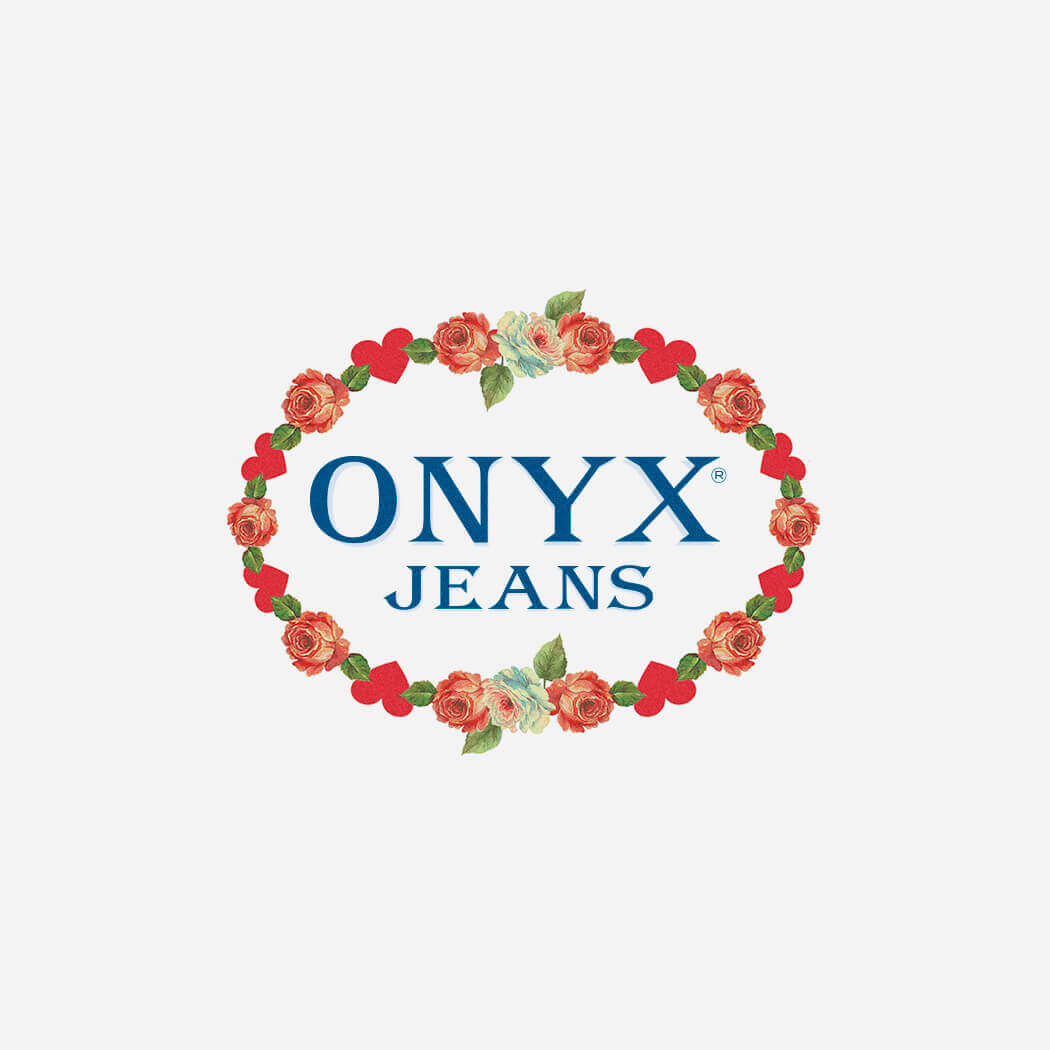
1993
Graphic design of the Onyx Jeans brand, that of the girls of the TV Show ‘Non è la Rai’
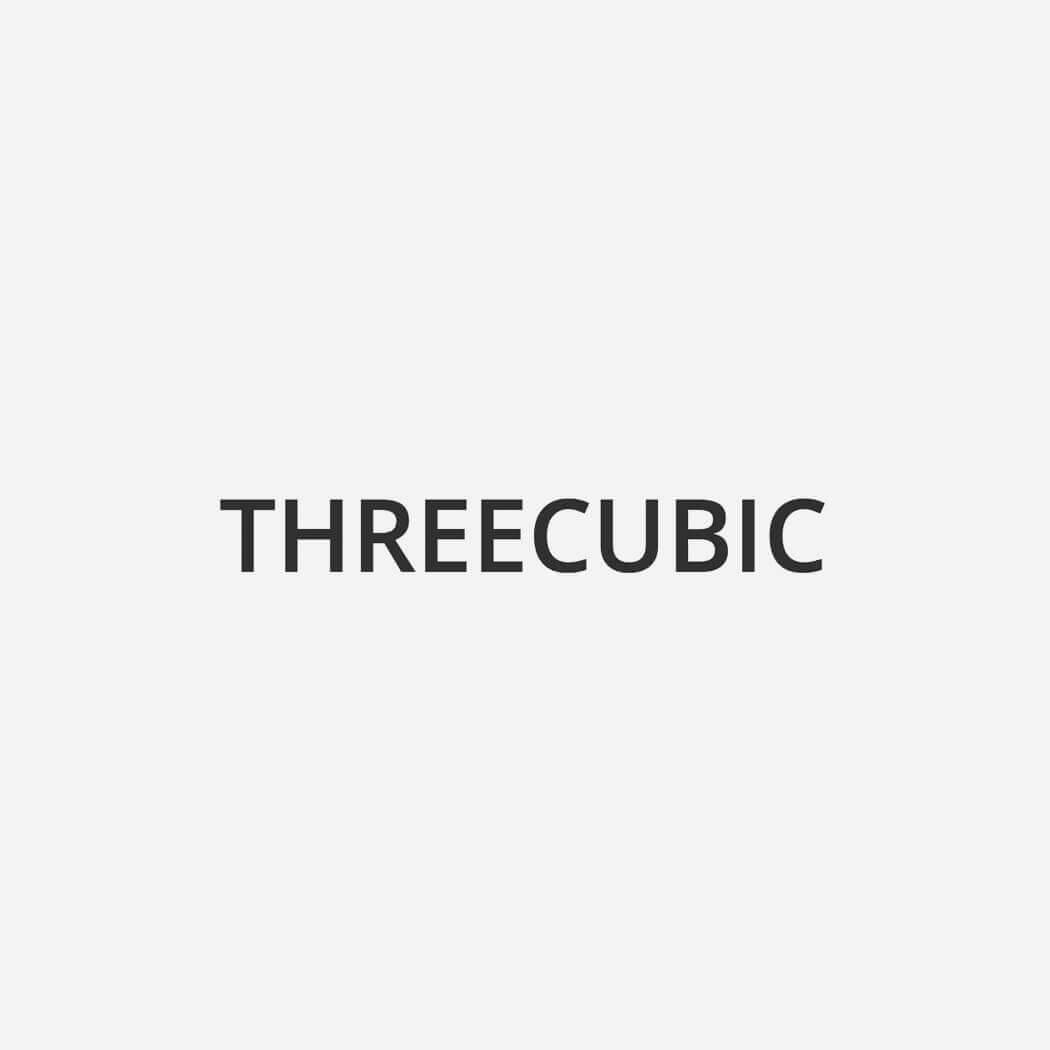
2000
Naming and Nominal Filing of the EU Community Trademark Mark in 8 classes of products/services
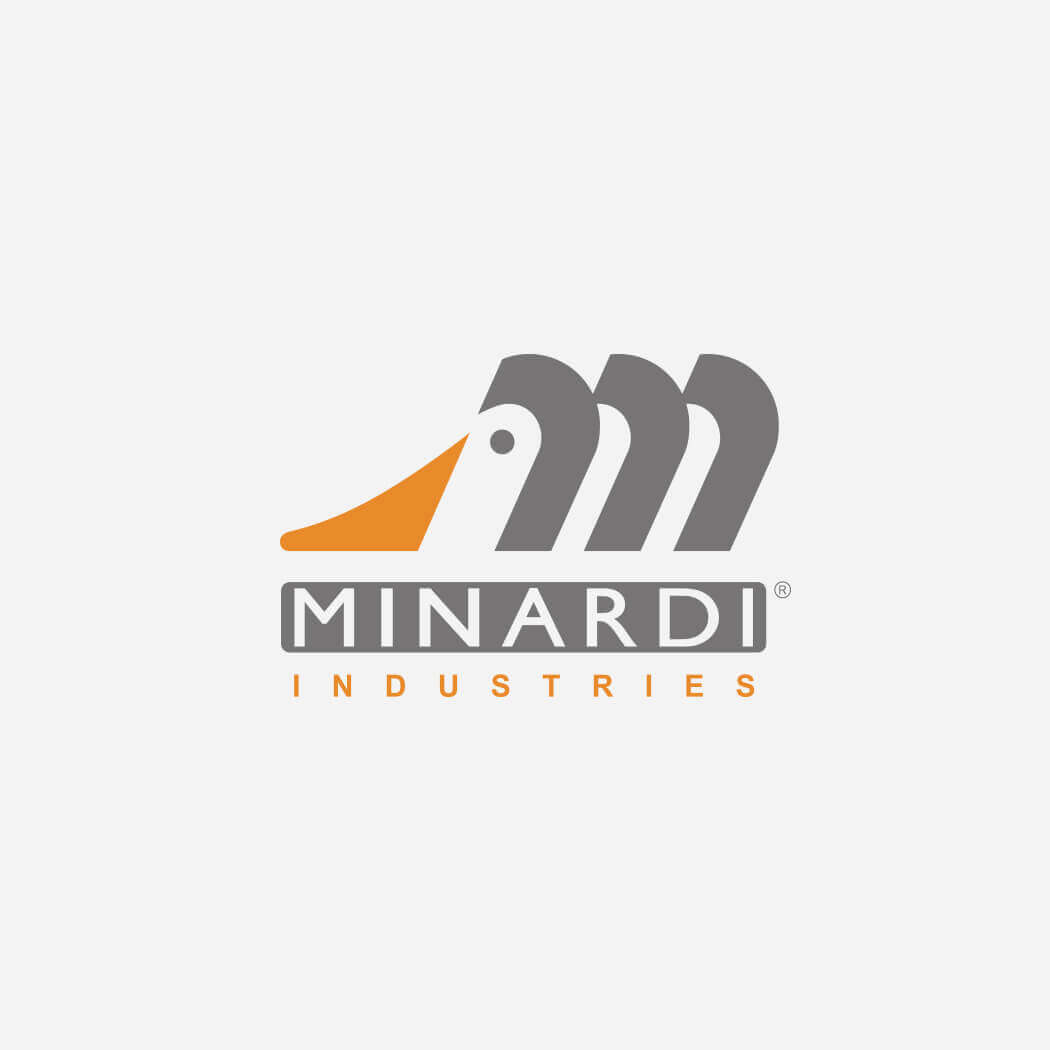
2007
Graphic restyling of the Minardi Industries brand

2019
Naming and Nominal Filing of the EU Community Trademark Mark in 2 classes of products/services
Related Posts

